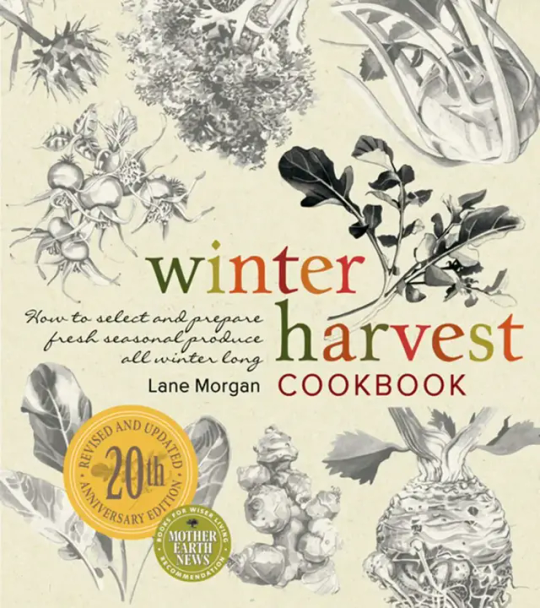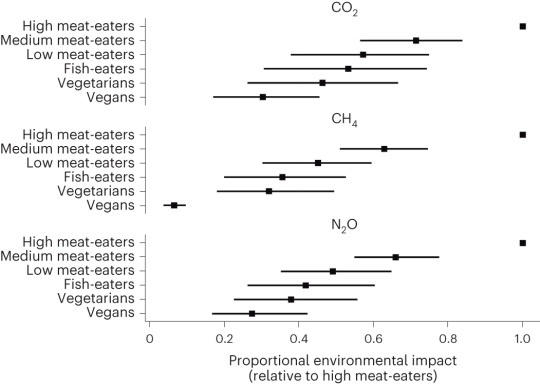#SustainableFarming
Explore tagged Tumblr posts
Text

Here's how climate change is redrawing Europe’s wine map !
'Ten years ago, you would never see a Danish wine on the list,' says Paul Robineau, executive head sommelier for the Taillevent group. 'But, with the climate changing, Denmark is on its way to make great wines.'
Courtesy: Financial Times
#human rights#humanity#equal rights#climate crisis#climate catastrophe#climate action#climate change#global warming#climate justice#environment#pollution#human footprint#rioja#wine#winelover#red wine#europe#map#winery#sustainableliving#sustainablefarming#sustainability#financial times#denmark#chardonnay
27 notes
·
View notes
Text




So, I've recently partnered with New Society, a Canada-based company that publishes books on ecologically sustainable agricultural practices and how to care for your body. I came across this while looking for literature on urban and apartment gardening (which I've found here!) because I would like to be prepared as much as possible for these next few years; plus, I've missed having a green thumb.
I recommend buying books like these as well as downloading videos on food gardening and small-scale farming, especially in ways that benefit the ecosystem.
If you'd like to peruse their titles, click the link! Note: I receive a small commission from any sales made through my affiliate link.
#environment#books#academia#sustainability#sustainablefarming#cottagecore#literature#enviromentalism#studyblr#surviving capitalism#urban#bookblr#ecology#social activism#climate change#climate action#small press#Canada#indie publishing
8 notes
·
View notes
Text
Butcher and Process
The main work of the day was running some errands with my son's roommate (we both needed some things at Tractor Supply) and then processing the meat that we deboned yesterday. I had a terrible time with my meat grinder last time I used it, but then realized there was a knob on the side that didn't get tightened down as much as it needed.
With him chopping the goat meat and beef suet and me running the grinder and sprinkling seasonings, we made short work of about 8 pounds of loose sausage. He then helped me clean up the mess, bless his heart, and took the meat home freeze some of it and also to start making dinner!
I roasted a small section, with bacon draped over it. It was ok in taste, but not tender as I'd want. A learning experience. Since we also had baked potatoes and green beans from the garden, and apple sauce from the orchard, it was a full meal from the farm.
The dogs all got wonderful, delightful bones earlier in the day. They were all happy, but Rosalie was particularly in heaven. I left her tied under the beech tree, surrounded by cozy leaves and gnawing blissfully on the bone. I'm reasonably sure she had never had one in her life until she came here.
19 notes
·
View notes
Text

AI in agriculture is helping farmers plan smarter and reduce waste, making way for a more sustainable future.
Agritech is growing fast, and we’re just getting started! Stay tuned for more updates on how AI is changing the game in farming.
Curious about how AI can benefit your farm? Let’s connect and chat: https://www.pranathiss.com
7 notes
·
View notes
Text

Indore and Udaipur have achieved the remarkable distinction of becoming India’s first internationally recognized wetland-accredited cities under the Ramsar Convention. This prestigious recognition highlights their unwavering commitment to conserving and sustainably managing wetlands, ensuring a balance between urban development and ecological preservation.
Wetland-accredited cities are those that protect and maintain wetlands, vital ecosystems that provide essential environmental and community services. Accreditation is granted to cities that meet six stringent international criteria focused on the conservation of wetland ecosystems, sustainable urban planning, and ecosystem service protection.
Globally, China leads with 22 accredited cities, followed by France with 9, showcasing the growing integration of wetland conservation into urban development. With over 2,400 Ramsar Sites worldwide, covering more than 2.5 million square kilometers, and 85 wetlands protected under the Ramsar Convention in India, this achievement by Indore and Udaipur serves as an inspiration for cities aiming to secure a sustainable future.
#general knowledge#affairsmastery#generalknowledge#current events#current news#upscaspirants#india#upsc#generalknowledgeindia#upsc current affairs#upsc2025#upscpreparation#iaspreparation#indore#udaipur#bharat#wetlands#nature#conservation#ecology#sustainable#sustainability#sustainableliving#sustainableenergy#sustainablefarming#ecological restoration#ecological balance#climate and environment#environment#environmentalism
9 notes
·
View notes
Text
hey guys check this out (look closely at methane (CH4))


source: https://www.nature.com/articles/s43016-023-00795-w
go vegan!!
#climate change#greenhouse gas emissions#greenhouse gasses#greenhouse gas reduction#veganism#vegan#vegetarian#environment#tree huggers#sustainability#sustainablefarming
11 notes
·
View notes
Text
The Secret to Freshness: How Harvest Fresh Brings Nature to Your Plate
By Harvest Fresh, we ensure that your ingredients are the most fresh and natural. Quick salads to gourmet dinners, our promise of quality makes all the difference. This is how we take nature to your plate.
1. Grown with Care Our produce is harvested from local farms and eco-friendly practices, away from any harmful chemicals. It is sheer natural goodness embedded in it. 2. Picked at Maximum Ripeness. We pick our crops while they are still at their best, ensuring every item reaches the customer with its promise of flavor and nutrients, freshness. 3. From Farm to your Table. Our efficient system gives us farm-fresh produce, the faster we reach customers, while keeping intact the quality and taste of every produce. 4. Sustainability First. Hence an eco-friendly thing: it nourishes the planet as it does the people it serves with healthy, fresh produce. 5. Have Recipes That Inspire. Visit our website and social media platform for different delicious recipes on how to use our produce's natural flavors.
Join Us You can follow us on Tumblr for all our updates, tips, and inspiration. With Harvest Fresh, freshness is our promise to you!

#FarmToFork#FreshProduce#HealthyEating#SustainableLiving#EcoFriendlyFarming#OrganicLifestyle#HarvestFresh#NatureOnYourPlate#FarmFresh#LocallyGrown#SustainableFarming#FreshFoodDaily#ChemicalFree#PeakRipeness#FromFarmToTable#EatClean#HealthyLifestyle#NaturalGoodness#SupportLocalFarmers#EcoConscious#FreshIsBest#HealthyRecipes#FarmFreshFlavors#SustainableChoices#FreshAndHealthy#EatLocal#SeasonalProduce#NourishYourBody#SustainabilityMatters#PureAndSimple
6 notes
·
View notes
Text

Explore the world of honeybees on wax paper with water droplets around them. Learn about beekeeping and the fascinating...
5 notes
·
View notes
Text

🌾 "FARMERS FEED THE WORLD" – a bold, minimalist design that honors the hardworking farmers who nourish the planet. Featuring silhouettes of farm animals, this shirt is perfect for those who support agriculture and appreciate the vital role farmers play in our lives. 🚜🐄🐖🐓 Buy Now!!!
My Store
#FarmersFeedTheWorld#SupportFarmers#AgricultureLife#FarmStrong#FarmLife#RuralPride#SustainableFarming#FarmToTable#ThankAFarmer#AnimalSilhouettes#CountryStyle#FarmingCommunity#EatLocal#FarmPride#BackToTheLand#t shirt#teepublic#print on demand#redbubble#graphic design#t shirt design#gift ideas#artwork#digital illustration#fanart
3 notes
·
View notes
Text







🌍 This World Sustainable Energy Day, embrace renewables and a greener future! 🌱
📚 Explore insightful reads at Sriina.com.
🍀Books Link: Book1, Book2, Book3, Book4, Book5
#SustainableEnergy#GoGreen#SriinaBooks#Sriina#sustainablefashion#sustainablefarming#sustainability#sustainableliving
2 notes
·
View notes
Text

Harmony starts below the surface.
Adding beneficial microbes like bacteria, fungi, and nematodes orchestrates a balanced soil ecosystem—but patience is key.
These tiny microbes need time to repopulate and find their rhythm. Rushing only disrupts the balance that ensures thriving plants.
🦠 Key Players in Soil Health:
Rhizobia: Nitrogen-fixing root nodule residents.
Mycorrhizal Fungi: Extend roots to access nutrients.
Actinobacteria: Break down organic matter.
Protozoa: Unlock nitrogen by consuming bacteria.
Nematodes: Manage pests and transport microbes.
Let the symphony play—it’s worth the wait! ✨
#environment#environmental education#environmental awareness#environmental justice#agriculture#regenerative agriculture#regenerative farming#sustainability#sustainable living#sustainablefarming#organic#organic matter#organic lifestyle#compost#compost lifestyle#composting#biodiversity#ecomindset#nature lovers#conservation#sustainable#take action#planet over profit#protect the environment#mushrooms#wild fungi#mushroom photography#fungi photography#soil health#permaculture
2 notes
·
View notes
Text
#EnvironmentalHealth#Sustainability#EcoFriendly#PlasticFree#ZeroWaste#SustainableFarming#Agroecology
2 notes
·
View notes
Text
Harnessing technology: The future of precision agriculture
By Vyankatesh Sharma, CEO and Founder, NEEL-INITIATIVE
In today’s fast-paced digital age, agriculture is no longer confined to traditional tools and methods. The industry is witnessing an unprecedented transformation, driven by cutting-edge technology, advanced artificial intelligence (AI), and innovative precision farming solutions. At NEEL-INITIATIVE, we are proud to lead this evolution, empowering farmers worldwide with high-tech agricultural machinery that redefines farming as a sustainable and rewarding lifestyle.
As the CEO and founder of NEEL-INITIATIVE, I am passionate about leveraging technology to revolutionize agriculture. Our mission is clear: to enhance productivity, reduce resource wastage, and provide farmers with a lifestyle worth living through state-of-the-art solutions tailored for modern needs.
The Agricultural Revolution
The agriculture industry is at the crossroads of change, with global challenges such as climate change, resource scarcity, and a rapidly growing population demanding innovative solutions. By 2050, the world will need to produce 70% more food to sustain nearly 10 billion people. Traditional farming techniques cannot meet this demand alone.
This is where precision agriculture comes in—a game-changing approach that uses technology to maximize efficiency, enhance crop yields, and promote sustainable farming practices. Precision agriculture not only optimizes farming inputs but also ensures that resources like water, fertilizers, and pesticides are used judiciously.
The Role of Technology in Precision Farming
At NEEL-INITIATIVE, we harness the power of AI-driven technologies, machine learning, and IoT-enabled agricultural machinery to deliver intelligent solutions.
Here are the key ways in which our technology is revolutionizing farming:
1. AI-Enhanced Agricultural Machinery
Our AI-powered machines are designed to make farming smarter and more efficient. From automated tractors to smart harvesters, these machines collect and analyze data in real time, offering insights that drive better decisions. They assess soil conditions, monitor crop health, and even predict the best time for planting and harvesting.
2. Data Analytics for Smart Farming
Data is the lifeblood of modern agriculture. Using drones, satellite imaging, and IoT sensors, our systems gather precise data on variables like soil fertility, moisture levels, and crop performance. This data is processed by AI algorithms, providing farmers with actionable insights to optimize every aspect of their operations.
3. Sustainable Resource Management
Sustainability is a core value at NEEL-INITIATIVE. Our solutions help conserve resources by employing advanced precision irrigation systems, which deliver the exact amount of water needed. By minimizing waste, farmers can cut costs and reduce their environmental footprint.
4. Predictive Analytics for Risk Mitigation
Through predictive models powered by machine learning, we offer farmers tools to anticipate weather changes, pest infestations, and disease outbreaks. This proactive approach helps farmers mitigate risks and improve crop resilience.
5. Blockchain for Food Traceability
Consumers today are demanding greater transparency in the food supply chain. Our technology incorporates blockchain solutions that provide end-to-end traceability, ensuring that every step of the production process is accountable and reliable.
NEEL-INITIATIVE: Leading the Future of Farming
At NEEL-INITIATIVE, we are not just building machines; we are building a legacy of innovation and empowerment. Our high-tech machinery is specifically engineered to address the unique challenges faced by farmers.
When I founded NEEL-INITIATIVE, my vision was to create a company that goes beyond selling products—we provide transformative artificial intelligence solutions that integrate seamlessly into the lives of people. Our systems are designed to enhance efficiency, promote sustainability, and ensure maximum profitability for farmers.
Why Choose NEEL-INITIATIVE?
Advanced AI Technology: Our agricultural machines are powered by cutting-edge artificial intelligence that continually learns and improves.
Ease of Use: Our tools are user-friendly, ensuring that farmers of all skill levels can adopt them without hassle.
Cost Efficiency: We design scalable solutions that fit farms of all sizes, making advanced technology affordable for small-scale farmers.
Training and Support: We offer comprehensive training programs to help farmers maximize the potential of our solutions.
A Lifestyle Worth Living
At NEEL-INITIATIVE, our tagline, "Providing a lifestyle worth living," reflects our dedication to enriching farmers' lives. Our mission is not just to improve agricultural practices but to create a future where farming is fulfilling, efficient, and environmentally responsible.
Our solutions enable farmers to:
Monitor fields remotely using mobile apps.
Optimize resources to cut costs and increase yields.
Reduce labor-intensive tasks through automation.
Make data-driven decisions for long-term success.
Overcoming Challenges
While the benefits of precision agriculture are undeniable, the road to adoption comes with challenges, including:
Lack of Awareness: Educating farmers about the potential of precision agriculture is a critical task.
Digital Divide: Bridging the gap in access to digital infrastructure is essential for widespread adoption.
At NEEL-INITIATIVE, we address these challenges by providing:
Flexible Financing Options: Helping farmers access the tools they need without financial strain.
Educational Outreach: Conducting workshops and training sessions to showcase the advantages of precision farming.
Accessible Solutions: Designing equipment that works efficiently even in areas with limited connectivity.
The Future of Agriculture
The future of agriculture lies in embracing technology and innovation. Precision agriculture is no longer a luxury—it is a necessity. By integrating AI, IoT, and big data analytics into farming, we can address the challenges of feeding a growing population while preserving the planet’s resources.
At NEEL-INITIATIVE, we are proud to be at the helm of this transformation. Our advanced tools and machinery are paving the way for a brighter, more sustainable future in agriculture.
Join the Revolution
As the CEO of NEEL-INITIATIVE, I invite farmers, technologists, and stakeholders to join us in shaping the future of farming. Together, we can create an ecosystem where technology and nature coexist harmoniously.
The future of agriculture is here, and at NEEL-INITIATIVE, we’re building it one innovation at a time.
Vyankatesh Sharma CEO and Founder, NEEL-INITIATIVE
#artificial intelligence#startup#agriculture#neelinitiative#vyankatesh sharma#economy#robust#technology#farming#sustainablefarming#NEEL-INITIATIVE
2 notes
·
View notes
Text

This image captures a vibrant hydroponic farming setup, where fresh, leafy greens (presumably lettuce) are grown in a controlled, soilless environment. A hand holds a beautiful head of lettuce with its healthy roots exposed, demonstrating the efficiency of the hydroponic system. The background shows a well-maintained greenhouse full of similar plants, supported by a nutrient-rich water system. The setup exemplifies sustainable farming, offering a glimpse into the future of farming—clean, efficient and space-saving.
#Hydroponics#SustainableFarming#Hydrofarming#FutureOfFarming#HydroponicLettuce#GrowYourOwnFood#SoilLessFarming#UrbanGardening#PlantPower
2 notes
·
View notes
Text

🌍 World Environment Health Day 🌱
At Shaktiman, we are committed to supporting both farmers and the planet. 🌾 By offering advanced agricultural equipment, we help reduce environmental impact while boosting productivity. 🚜
This World Environment Health Day, let’s respect and protect our planet every day. Together, we can preserve our beautiful home through sustainable farming practices and innovative machinery. 🌿💪
Join the movement for a greener future with Shaktiman—where agriculture meets sustainability. 🌎
📲 Missed Call: 91041-91037
#farming equipment#agriculture equipment#agriculture#farmers market#farming#worldenvironmentday#worldenvironmentalhealthday#shaktiman#savepla#ecofriendly#sustainablefarming#sustainableenergy
2 notes
·
View notes
Text
instagram
Shapira /sha-'pee-ra/ שַׁפִּירָא is the neighberhood in Tel Aviv.
Lira /'lee-rah/ לִירָה was the currency in Israel from 1952 until 1980, replaced by the Shekel /'she-kel/ שֶׁקֶל.
And sustainable in Hebrew is /bar 'kay-ma/ בַּר-קְיָמָא.
https://www.instagram.com/reel/DAGWS9Gxqoq/?igsh=M25icGN2b2dkN21x
🍏🥬🥗
#sustainableliving#sustainablefarming#hebrew#language#farm to table#neighborhood#tel aviv#jumblr#Instagram
4 notes
·
View notes